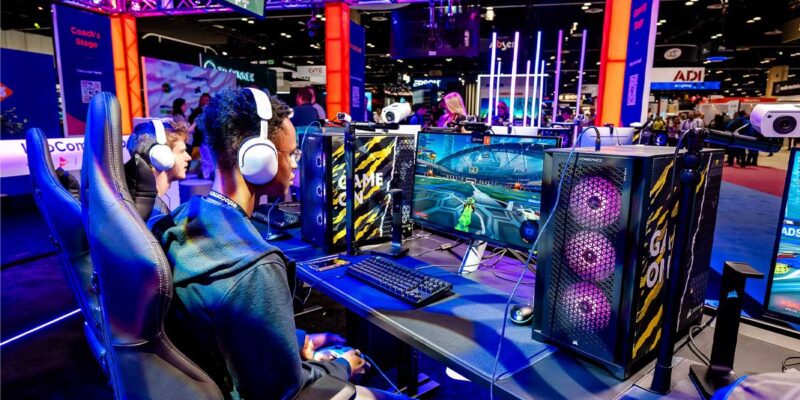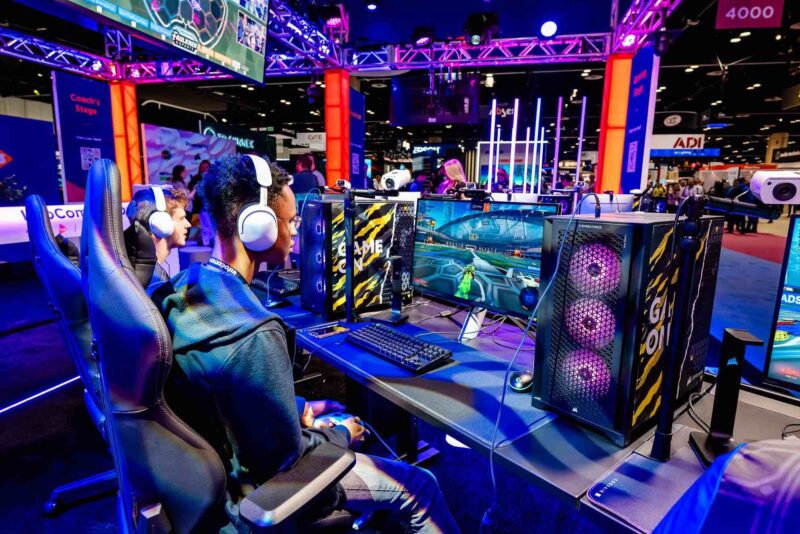Part 2: Simple Expectations of InfoComm 2021 — Exhibit Only 1 Product

In Part 1 of my “Simple Expectations of InfoComm 2021,” series of blogs, I explained some of the elements of how InfoComm 2021 will be like no other InfoComm we’ve had in history — for OBVIOUS reasons. And, my advice to exhibitors to help them maximize their ROI and reach the attendees well was simple — in fact, it was KEEP IT SIMPLE. In years past, we’ve seen complicated and creative booths with a lot to see and experience. But if you do that in 2021, I feel strongly that will be a bad investment, go unnoticed and — more importantly — unappreciated.
In Part 2, I’ll expand upon my thoughts and justify why I feel very strongly that anyone exhibiting at InfoComm should only show ONE product — and only a new one at that. Nothing old, nothing we’ve seen before. I want to see something new and only one!
As I mentioned in Part 1, end users will be virtually nonexistent at InfoComm this year. Those who will be there will primarily be higher-ed focused. So, as I go through this, keep that in mind as higher-ed AV teams are not the average end user. In fact, many of them have teams on staff that used to work for integrators or are doing integration on campus themselves. That level of an end user is more like an AV integrator anyway.
So, why only one product if the show will be filled with integrators?
Well, time will be skewed like never before. At a normal InfoComm, time is accelerated in ways that you never see in the real world. For example, if you’ve ever walked into the Crestron, Legrand, Biamp, Epson, LG or Sony booths, you know exactly what I am talking about — the time you get with the teams there is limited and fast-paced. It has to be, as there are others waiting to be shown the same new things you’re seeing. It’s sort of like an amazingly organized information assembly line. Things (and meetings) move quickly — then you move on to the next new product station or the next booth and the manufacturer takes the next person to do the new product demo.
But with InfoComm 2021, we’ll be together for the first time in 18 months. We will relish and cherish the time we spend just talking, 3D human to 3D human. So, for this show, time will be skewed via a slowdown. The conversations will be somewhat like you’d have returning to your 10-year class reunion at a school you loved attending. Time will be spent talking about what you did, what you missed, what they did and missed, what wasn’t done, where things are heading, the chip shortage, supply chain issues and then, finally turn to new products (for some people).
The point is, as InfoComm attendance will be limited to the top-tier attendee, a focus on products will be diminished.
What the heck am I talking about? Let me explain.
First, to do that, I’ll have to take you behind the curtain to explain how we (at rAVe) approach shows. As I am sure you’ve seen, we canvass shows better than anyone — shooting thousands of videos in a matter of a few days and handing out 10,000+ T-shirts at every InfoComm since 2010. To accomplish this, we’ve identified and categorized show attendees into three tiers of people who attend InfoComm shows.
- Tier 1: The people in tier 1 are C-Suite, executives, upper-level managers and owners. They are very different than the average attendee. Back when they were younger or new to the industry, they attended InfoComm education, carefully walked the show floor looking for both new tech and new, potential breakout companies and used InfoComm to negotiate dealership and distribution contracts. But now, they focus on relationships. And, they tend to skew older — this is a critical point I will readdress later.
- Tier 2: The people who make up tier 2 love to discover new products, technology and also seek and love to talk to talented people in AV. In addition, they love product demos, understanding how new technology will affect what they are doing now and spend much of their time at the show roaming from booth to booth looking at new products and making new friends who can and will, educate them on the new stuff. These people include integration salespeople, most systems designers, higher-ed #AVtweeps, IT managers, service and live events managers and tech leads.
- Tier 3: The people who make up tier 3 love product training, education, certification and — when not in classes or manufacturer training — spend their time on the show floor, seeking out problem-solving products that they didn’t know existed. They include install techs, live events pros, some systems designers, service pros and most end users at the show (sans higher-ed AVtweeps and IT managers).
InfoComm 2021 will be filled — mostly — with tier-1 professionals. Because of this, their primary focus will NOT be on new products — they will be focused on the relationships they’ve built as well as the future potential and health of not only their own companies but the industry overall. As they skew older, they don’t have to worry about what might happen to their kids at home, post-show, as their kids are primarily grown and out of the home. They don’t have to worry as much about the effects of the delta variant of the COVID-19 virus as they’re vaccinated and so are their spouses. Their focus will be to help restart this industry and support AVIXA, the AV manufacturers who do show up in Orlando and the AV community.
With this in mind, I restate my opening narrative: “I feel very strongly that anyone exhibiting at InfoComm should only show ONE product.” These people, even in normal InfoComm years, don’t focus on new products, so taking new products and technology, in this still-COVID-year, will not benefit you. Attendees will focus on how you are, how your business is and how they can work with you — personally — to help bring back AV.





